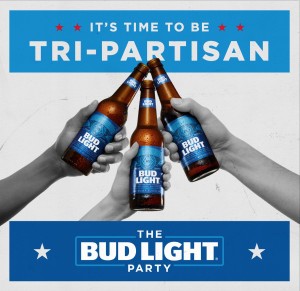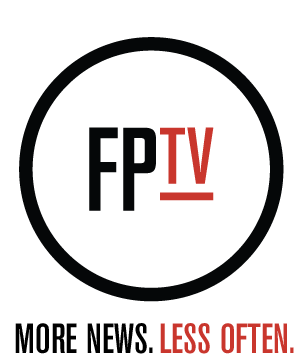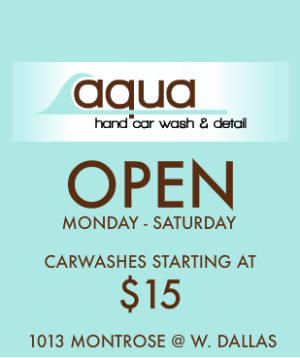Visual Vernacular: Zachary Gresham
Patricia Vazquez Gomez, “Jornaleros”
This Friday, Art League Houston employs both an exhibition and a publication to examine the process, practice, and identity of socially-engaged artists who are shaking things up between art and pedagogy. Zachary Gresham is an arts administrator and educator who currently serves as Education Programs Director at Art League Houston and the organizer of the group exhibition with/in: blurring the line between art and education. Gresham has been wading in the waves of education for quite some time post grad school, seeing that he is an adjunct lecturer in the College of Education and the College of the Arts at the University of Houston. There he teaches art in elementary schools, an art education course for upper-level education majors and Technology in the Arts, and a graduate seminar in the Master of Arts in Arts Leadership program. He took the time to answer some questions about the exhibition and perhaps how our community can gracefully cultivate the arts for all ages.
Free Press Houston: How was art incorporated into your youth?
Zachary Gresham: In my youth, I felt like I fit into the arts the best. I was a very introverted, anxious, and shy kid; however, I discovered that those involved in the arts were my people and that the process of making art was something I really enjoyed doing. My early middle school years were particularly bad, but I had worked out a deal with my seventh grade visual art teacher to take art twice a day. One of the classes, I would do regular coursework. The second class I would basically be her studio assistant: organize the art-making materials, load/unload the kiln, and things of that nature. The art teacher created a space for me to feel comfortable and I knew when I was in her classroom, things would be fine. I guess I haven’t really thought about it, but I am sure this experience could be linked to my current work as an art educator/administrator.
At the high school I attended, two out of three of the art teachers were coaches. Not to say that a coach cannot be an awesome art teacher, but I’m pretty certain that it was my schools way of finding a subject that the football coaches could be on staff for. Eventually in high school I began shifting more attention on music and even started off at the University of Texas at Austin in music, but switched after a year. At that time I was still really into visual art, however, and took a great number of art history courses and was a member of the Blanton Museum of Art’s Student Guild. I really enjoyed working at the museum and it ultimately led to internships in the arts, which led to jobs, etc.
Of course the art-making element was essential. However, in general it was the relationships through the art experiences that were most beneficial, important to me, and what I look back on fondly. My middle school art teacher, Mrs. Kilpatrick, my music teachers, and the network of like-minded peers — those relationships created were the most important part.
FPH: Were there any instances in your own education that you used as fuel for this exhibition? Or observation of arts education?
Gresham: The fuel for this exhibition was really acknowledging this divide between art education and “the art world.” I used to work at the Museum of Fine Arts, Houston and the chasm between the education department and the other departments within the museum, curatorial especially, felt huge. Even physically, we were located in a completely different building. The curatorial department always felt like the rock stars, however, we were quietly producing and running the programs that created experiences for the public to engage with the work in the galleries.
Here at Art League Houston, with my colleague in charge of exhibitions and public art projects, Jennie Ash, we have talked a lot about this divide and have tried to think of creative ways to cross-pollinate audiences that are typically siloed. Patrick Renner’s Funnel Tunnel did this in a huge way, for example. In addition to the community painting parties that we held, Patrick also met with students at an after-school program we were involved in, bringing the project to students way outside the loop. The sixth graders were actually the first painters for the project.
The goal, therefore, was to have a show that included socially engaged artists who were thriving in this divide. Each of the artists in the exhibition approaches this middle area in very different ways, but is each utilizing education as a medium for art production.
Andres L. Hernandez, still from “Untitled (Site Performance #1),” 2024
FPH: As part of the exhibition’s statement, the collective power of this exhibition is to incite individual/communal action, response, contemplation, and resistance. What are some examples of these actions and how do you hope they spark a viewer?
Gresham: I really just want this exhibition to create a reflective space that might spark an action, response, further contemplation, or resistance to our traditional ideas about art and education. Although I don’t really have a concrete idea of what I would wish to happen per se, for one person this might look like them leaving the exhibition and thinking about how they can consider transferring their skills and background to another individual or group. Everyone has something that they can teach — whether it is art, knitting, or computer coding — whatever. I would love for this exhibition to result in action. For another individual, on the other hand, perhaps this simply means reflecting on his or her own art education. I really just hope for a response or reaction. If someone were to walk in and out of the gallery without some sort of reaction, for better or for worse, I’d be disappointed.
FPH: How did you choose the artists for this exhibition and how has the pairing of local and national artists played out in the making of your publication?
Gresham: Without realizing it, for several years I had been making mental notes about artists outside of Houston that I had either met or seen from a distance that were creating work that that fit this idea. For example, I heard Andres L. Hernandez speak at an art education conference in 2024. I’ve been a big fan of The Pedagogical Impulse, a project that Hannah Jickling and Helen Reed were involved with in Toronto, Canada. I heard about Christopher Lee Kennedy’s work through an artist who came into town for Art League Houston’s Charge convening who thought I’d be interested in his work. Patricia Vazquez Gomez had created a book called When there are no borders between Art and Teaching, which connected me to her work. When I was given the opportunity to put this show together, I quickly reached out to each of these artists to be a part of the exhibition. They all are from various geographic locations, working with different audiences, which was also really important to me.
Looking locally, there are so many moments where art and pedagogy have collided. Great examples include Otabenga Jones and Associates’ Otabenga Jones Academy of Applied Arts, Ayanna Jolivet McCloud who founded labotanica, Gabriel Martinez with Alabama Song, Lynn McCabe with She Works Flexible, Carrie Schneider with Sunblossom Residency and Hear Our Houston, Sasha Dela with Saturday School at Skydive Art Space, Rebecca Bass and her many magical art cars, Mel Chin with The Seven Wonders project along the bayou, John Biggers at TSU, and many, many more. There are even a great number of organizations that are now fully formed non-profits that began as artist projects engaged in education: Lawndale Art Center with James Surls, Nameless Sound created by Dave Dove, Project Row Houses with Rick Lowe, Voices Breaking Boundaries with Sehba Sarwar, Workshop Houston founded by Seth Capron, Katy Goodman, Benjamin Mason, and Zach Moser, and again, probably many more beyond these.
I wanted this exhibition to include both out of town artists as well as those locally that work similarly. I decided that a publication of exchanges that would exist as part of the exhibition would be a way to do this. The pairings were established through conversations with each of the exhibiting artists. Some of the artists had Houstonians they wanted to reach out to specifically. At other times I helped to brainstorm and connect them. In the end, the publication, designed by local graphic designer Roby Fitzhenry, includes five artists, writers, educators, and high school students who created exchanges with the exhibiting artists. Some of the exchanges are straight forward interviews, whereas others are really incredible and unique forms of written exchanges between two artists.
Christopher Lee Kennedy, “I Don’t Do Boxes - Issue 1” (Illustration by Red Behnke)
FPH: What are some of the not so obvious parts or proposed improvements of arts education that have been explored or will be presented in this exhibition?
Gresham: One embedded idea in this exhibition that isn’t glaring, but I think the viewer can think a lot about, is identity. Are the individuals in the exhibition artists, educators, teaching artists, all of the above, none of the above? Does it matter what we classify them as? What makes someone an artist? What makes someone an educator? In working with these individuals, they each describe their practice differently from one another. Additionally, in relation to identity, each artist’s work has a personal connection to their history and background whether its issues related to labor rights, queer issues for teens in the southern United States, or restorative practice through urban youth development.
FPH: What are the hopes for this exhibition in regards to making an impact on the community?
Gresham: I think that what I wish for visitors of the exhibition to takeaway is to see try and embrace the gray area or the blurred lines between disciplines, whether it be art and education or otherwise. Why do we draw such distinctions? It seems that things get way more exciting in that gray area.
Also, as I mentioned, Houston has an impressive history of artists engaged in education. There are so many artists and educators doing really amazing things. At the same time, however, our city is growing and the public school system is very much lacking in regards to the arts. Artists have the ability to reimagine the possibilities of failed systems, create community, and to make change. I would love for a visitor to see this project as a call to action for the community to be more involved in shaping the education — art education or otherwise — in our city.
“with/in: blurring the line between art and education,” organized by Zachary Gresham,
will be on view at Art League Houston (1953 Montrose) from August 5 to September 17. The opening reception is 6 to 9 pm Friday August 5 at ALH Main Gallery with an artist talk at 7 pm.












